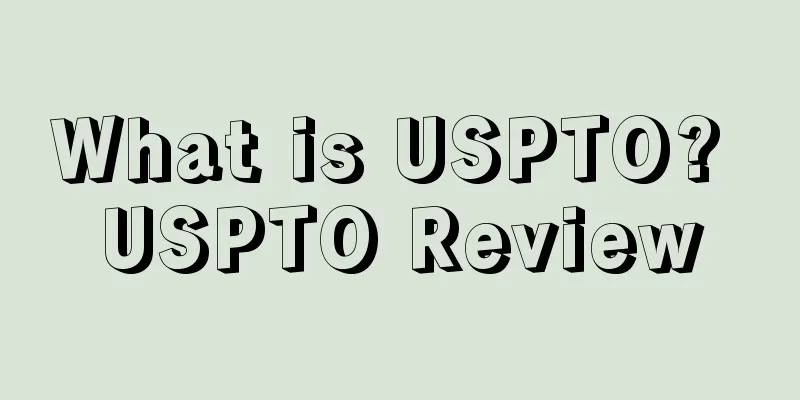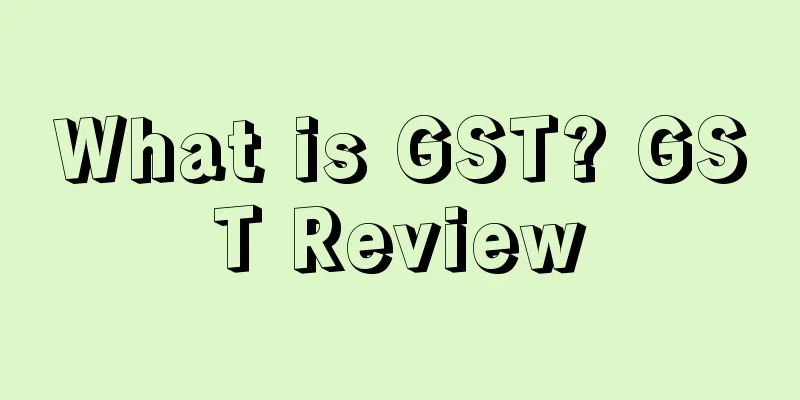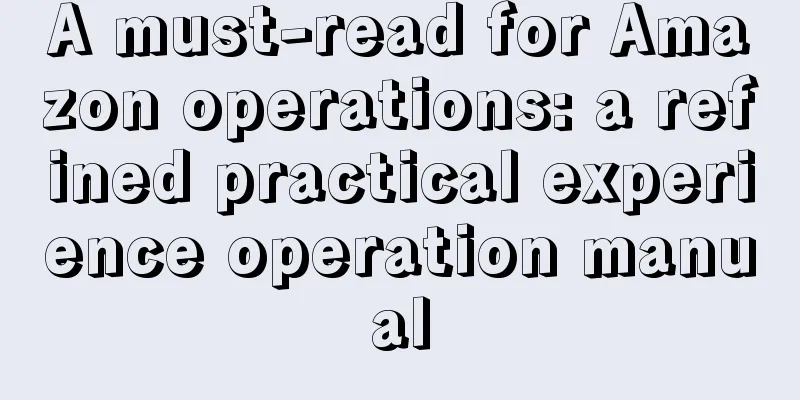What is USPTO? USPTO Review

The United States Patent and Trademark Office (USPTO) is a federal agency under the U.S. Department of Commerce that grants U.S. patents and registered trademarks. In 1975, with the approval of Congress, the U.S. Patent Office was renamed the United States Patent and Trademark Office (USPTO). Website: https://www.uspto.gov/ Employees: 12,000+ Chinese U.S. Patent and Trademark Office Founded: 1802 Full name: United States Patent and Trademark Office Headquarters: Alexandria, VirginiaMain Responsibilities1. Patent authorization and trademark registration; 2. Provide services to inventors related to their patents or inventions, product and service identification; 3. Manage patent, trademark and trade-related intellectual property rights by implementing laws related to patents and trademarks, and make relevant policy recommendations to the President and the Secretary of Commerce to provide advice and suggestions for strengthening the country's economic strength; 4. Provide advice and assistance to the Ministry of Commerce and other agencies on intellectual property matters; 5. Help and support innovation and national scientific and technological development by preserving, classifying and disseminating patent information. Trademark TypeThe United States Patent Act divides patents into three types: invention patents, design patents and plant patents, and the protection period is 20 years from the date of application. Letters, words, names, symbols, designs, or any combination of them can be applied for registration as a U.S. trademark. Required documents1. If you are a legal person, please attach a copy of your business license or valid registration certificate with the official seal; if you are a natural person, please attach a copy of your personal identity document; 2. Detailed information of the applicant (in Chinese and English), including name, nature, nationality, detailed address, postal code, and contact information; 3. Electronic version of trademark sample; 4. Product name and category; 5. The applicant submits a statement of sincere use of the trademark, indicating on what products or services the trademark will be used (intended use); 6. The applicant provides a statement of genuine use of the trademark in commerce (actual use); Application Process1. Design trademark 2. Search 3. Submit your application 4. Receive the acceptance notice (about 1 week.) 5. Initial approval 6. Typesetting and printing 7. Publish announcements 8. Any objections? 9. Formal Approval 10. Receive the certificate (about 6-8 months) USPTO Organizational Structure1. Patent Office: responsible for patent examination and related affairs. It consists of Inventor Assistance Program Office, Patent Examination Policy Department, Patent Business Department and Patent Resources and Planning Department. 2. Trademark Office: responsible for trademark registration and related affairs. It consists of the Trademark Examination Policy Department and the Trademark Business Department. 3. General Counsel Department: The main tasks are to serve as the legal counsel of the Director, handle complaints against recruitment and training decisions, provide legal advice; conduct legal review of various decisions made by the USPTO; and provide defense for the USPTO in the Special Administrative Tribunal. It consists of the Common Law Office, the Intellectual Property Law and Lawyer Office, the Patent Appeal and Conflict Committee, the Trademark Trial and Appeal Committee, and the Personnel Recruitment and Training Office. 4. International Department (foreign affairs department): responsible for contacting Congress, handling international affairs and safeguarding the legitimate rights and interests of American intellectual property holders worldwide. It consists of the Congressional Relations Department, the International Relations Department and the Law Enforcement and Rights Protection Department. 5. Administrative Management Department: Responsible for USPTO human resources, cooperation plans and management services. It consists of the Office of Civil Rights, the Office of Human Resources and the Office of Administrative Services. 6. Finance Department: Responsible for financial planning, management and procurement affairs. It consists of Planning Office, Finance Office, Financial Management System Office and Procurement Office. 7. Information Department: responsible for formulating strategic information plans and operating budgets; developing and maintaining automated information systems; managing computer facilities, equipment and communication networks; providing technical and technical development direction guidance for rebuilding business processes; providing policy guidance to affiliated institutions, etc. It consists of the Office of the Deputy Chief Information Officer, the Office of System Development and Maintenance, the Office of Customer Information Services, the Office of IT Business and Customer Support Services, and the Office of Structural, Engineering and Technical Services. 8. Patent Public Advisory Committee and Trademark Public Advisory Committee: Responsible for providing USPTO with advice on patent and trademark budget and management; responsible for reviewing the USPTO's implementation of policies, goals, performance, budget and fee income; providing advice to the Director on the above matters, and preparing an annual report within 60 days after the end of each fiscal year and submitting it to the President, the Secretary of Commerce and the Congressional Judiciary Committee. Historical DevelopmentThe United States Constitution, promulgated in 1787, established the federal system of the United States. One of the legislative powers granted to Congress in Article 8 is: "To promote the Progress of Science and useful Arts, by securing for limited Times to Authors and Inventors Patents for their Writings and Discoveries." The first patent law, enacted on April 10, 1790, was called "An Act to promote the progress of useful Arts" (abbreviated as "Patent Act of 1790"). In 1793, a new bill replaced the patent examination system with a patent registration system. The Patent Committee was abolished, and the granting of patent rights was no longer subject to examination of novelty and practicality, as long as the formal requirements were met. The Patent Act of March 3, 1837 required inventors to prepare two copies of the drawings when applying for a patent, and keep them separately, one copy to be recorded in the files of the Patent Office and the other copy to be attached to the authorization document to prevent it from being burned by fire. In 1849, the Patent Office was transferred from the State Department to the Department of the Interior. In 1850, a historic development was the introduction of the concept that an invention must not only be new and useful but also non-obvious in order to be patentable. The Patent Act of August 30, 1852 allowed patent applicants whose applications were rejected by the Patent Office to appeal to any judge of the United States District Court for the District of Columbia, thereby establishing the jurisdiction of the patent granting system. Several changes were made to the Patent Act in 1861. The most important of these changes included the appointment of three chief examiners to hear a review of any application that had been rejected twice by the primary examiner. In 1866, the Supreme Court ruled on double patenting in Suffolk Mfg Co v. Hayden. The court ruled that if the same inventor held two patents for the same invention, the second patent was invalid. In 1897, some statutes regarding the granting of patent rights were amended: a. If a foreign patent had been granted, a U.S. application must be filed within 7 months of the foreign patent application being filed, and b. The clause clarifying that knowledge or public use before the applicant made the invention limits facts that occurred in the United States. In 1925, the Patent Office was transferred to the Department of Commerce and Labor. In 1930, the Plant Patent Act was enacted to provide patent protection for asexually propagated plants. In 1941, in Cuno Engineering v. Automatic Devices Corp., the Supreme Court held that a patentable invention must "display a spark of creative genius and not merely a technical skill." The United States began an anti-patent law movement in the 1930s that lasted for more than 50 years. In 2008, the United States implemented the "Memorandum on Transparency and Open Government", which opened government data and information to the public and third-party organizations through platforms such as Data.gov. In 1946, the Patent Act was amended to reverse the Supreme Court's decision in Electric Storage Battery v. Shimadzu and apply the "first to invent" principle of U.S. law worldwide. In November 2000, under the American Inventor Protection Act, the USPTO was established as a performance unit under the Department of Commerce, operating in a more commercial manner and enjoying substantial autonomy in personnel, procurement, budget and other administrative functions. The United States Patent and Trademark Office (USPTO) has been working with Google since June 2010 and with Reed Tech, a subsidiary of LexisNexis, since June 2013 to provide free patent data download services to the public. According to information released by the United States Patent and Trademark Office (USPTO), starting from January 14, 2017, the official fees for U.S. trademarks will increase significantly. In addition, the fees for most items such as Madrid applications designating the United States, submission of evidence of use, and renewal have been increased to varying degrees. In July 2019, according to the latest policy issued by the United States Patent and Trademark Office (USPTO) on July 2, 2019, starting from August 3, 2019, trademark applicants outside the United States must apply for trademarks through a U.S. practicing attorney. References
|
<<: What is Prime Day Exclusive? Prime Day Exclusive Review
Recommend
Amazon can't capture the hearts of the most spending Americans
Recently, JungleScout released its "2023 Q1 C...
What is Giteki? Giteki Review
Giteki is Japan's mandatory certification for ...
What is StockExpress? StockExpress Review
The French STOCK EXPRESS overseas warehouse is a k...
"Dad Economy" is here! More Americans give gifts on Father's Day than on Mother's Day!
According to a survey by consulting firm Numerator...
What is HYPR? HYPR Review
HYPR is the world's largest and smartest influ...
What to do if the product is out of stock
<span data-shimo-docs="[[20,"一、断货的后果"...
What is PCI DSS? PCI DSS Review
The full name is Payment Card Industry Data Securi...
What is Micro Intelligence? Micro Intelligence Review
Micro Smart Tool is a cross-border e-commerce stor...
Yay! Amazon's new upgraded detail page!
Recently, Amazon's product pages have undergo...
Americans' holiday gift-giving trends hide these money-making opportunities
It is learned that the US economy is showing signs...
What is Delhivery? Delhivery Review
Delhivery is an e-commerce logistics platform in I...
What is Global Vientiane? Global Vientiane Review
Global Vientiane is a brand of Shenzhen Mingxing E...
What is Darfon Logistics? Darfon Logistics Review
Darfon Logistics (Shenzhen Darfon Logistics Co., L...









